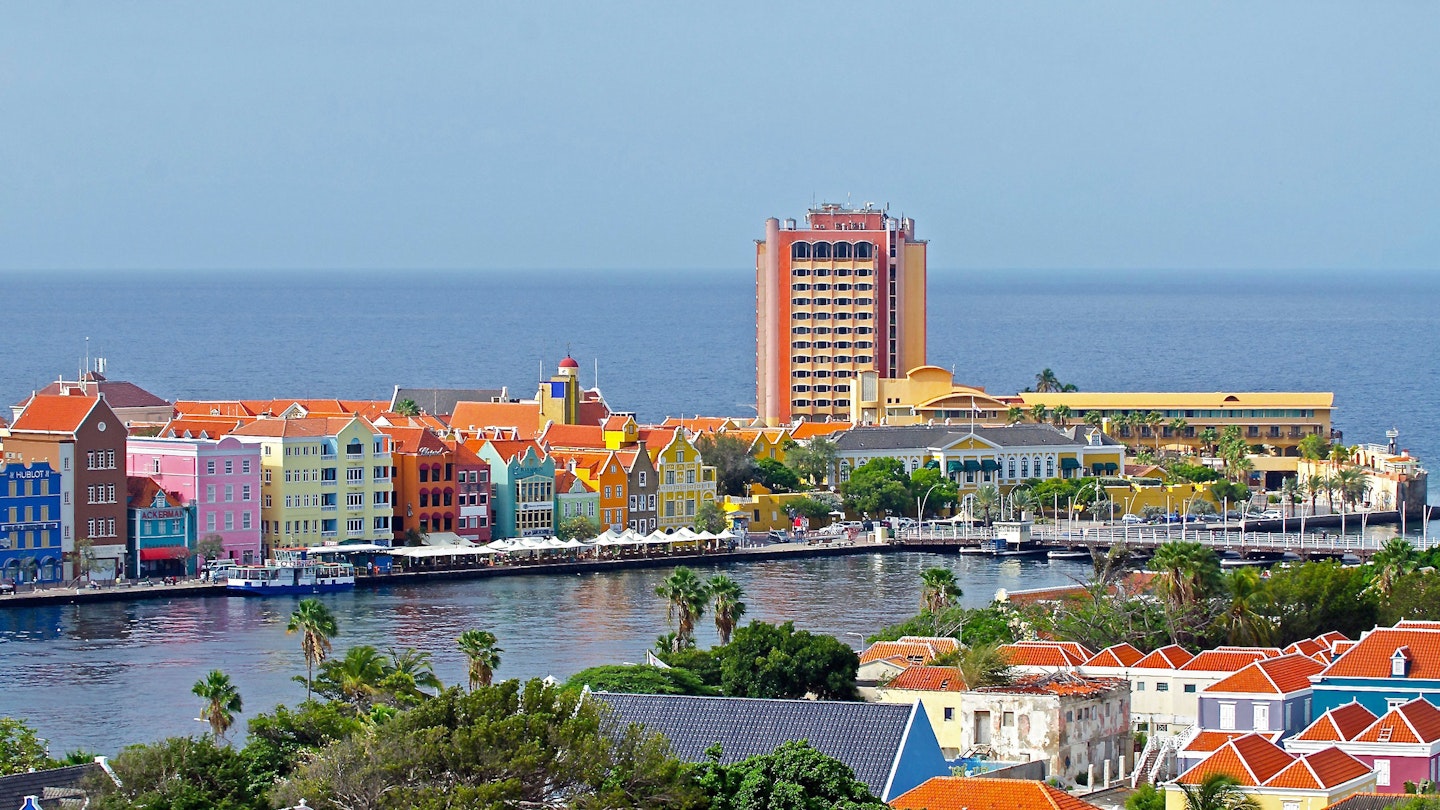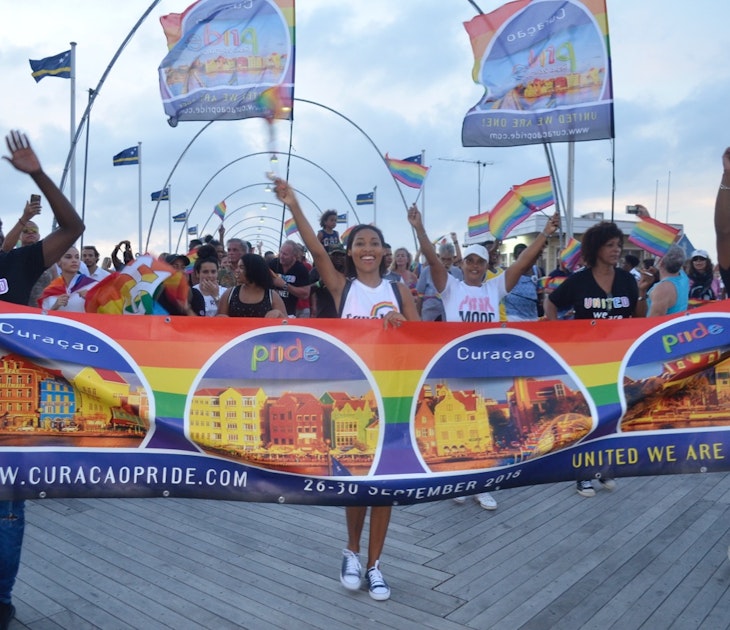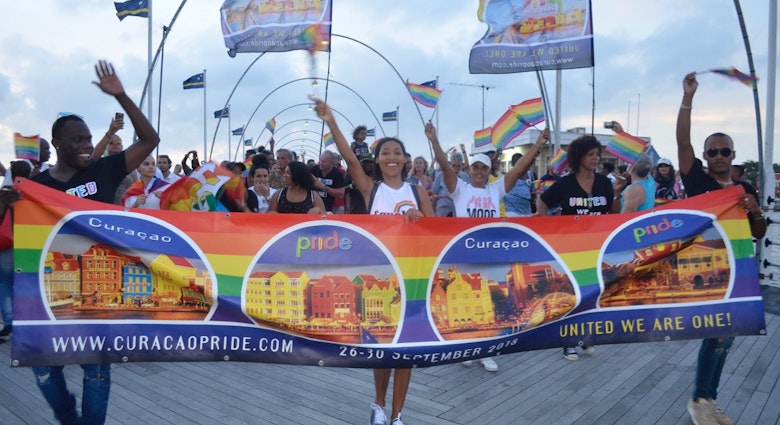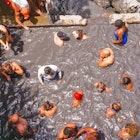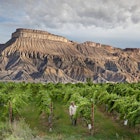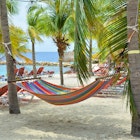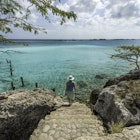This year, on December 4, 2017, Curaçao's rainbow-colored capital will mark 20 years since it was designated a UNESCO World Heritage Site. But Willemstad isn’t waiting until then to celebrate, and neither should you. From street art neighborhood revivals to walking tours and a weekly night market, it’s an exciting time to explore this Caribbean city's splendid architecture and evolving colonial neighborhoods.
Curaçao's crown jewel
It's hard to imagine today, glancing at the red, blue, green, and pastel yellow colors dancing on the blue surface that wraps the inner city, but Willemstad's UNESCO status was no overnight feat. Turning the city’s dilapidated buildings into the attractive space it is now, after centuries of heavy sea commerce, colonialism, and social upheaval, is the result of decades of teamwork, and passion for heritage.
After building Fort Amsterdam in 1634, the Dutch traded on Punda’s waterfront while living on the upper floors of their warehouses. Thriving commerce and a lack of space conspired to stretch the city into neighboring Otrobanda in the 18th century, where the working class resided, and later Pietermaai, and Scharloo.

In the early 20th century, Shell’s oil refinery opened and workers poured in from the Windward Caribbean islands. The packed inner city was already in disrepair. Stichting Monumentenzorg, Curaçao’s oldest running Monuments Foundation, was formed and began restoration work, but it was too great for a single body. In addition, on May 30, 1969, several buildings in the heart of Punda and Otrobanda went up in flames during the major oil worker revolt.
Willemstad’s neglected state finally attracted help in the 1980s, thanks to a combination of government funds from Holland and private projects. Massive building restoration took place, and more organizations formed to help with funding and oversight. It took ten years to restore nearly 200 buildings, and a Monuments Plan was put in place in 1990. The idea then came to apply for the World Heritage designation. The Kingdom of Netherlands submitted the application – Curaçao was then under Dutch rule – and it was approved on December 4, 1997.
Twenty years in, Willemstad remains firm on the UNESCO list, with a whopping 750 protected buildings across four distinct colonial districts.
Here’s how to celebrate now and enjoy one of the Caribbean’s most well-preserved heritage cities.
Explore on foot with Dushi Walks Curaçao
A Dutch transplant with Indonesian roots, Shirley Bal’s love for her island home shines as she takes you on a two-hour neighborhood walking tour of Otrobanda or Scharloo with her company Dushi Walks Curaçao. You’ll explore the main avenues, but also go off-the-beaten track into side alleys, along the most local parts of these vibrant colonial districts.
In Otrobanda, you’ll learn about the neighborhood’s architecture and history, meet locals, and hear about the area’s socioeconomic struggles. You’ll walk past colonial buildings in ruins – like Willemstad’s former fashion district – as well as elaborate facades, and enter Curaçao's oldest Catholic church. Street art is revealed along the way, showcasing artist initiatives to engage communities in preserving their neighborhoods.
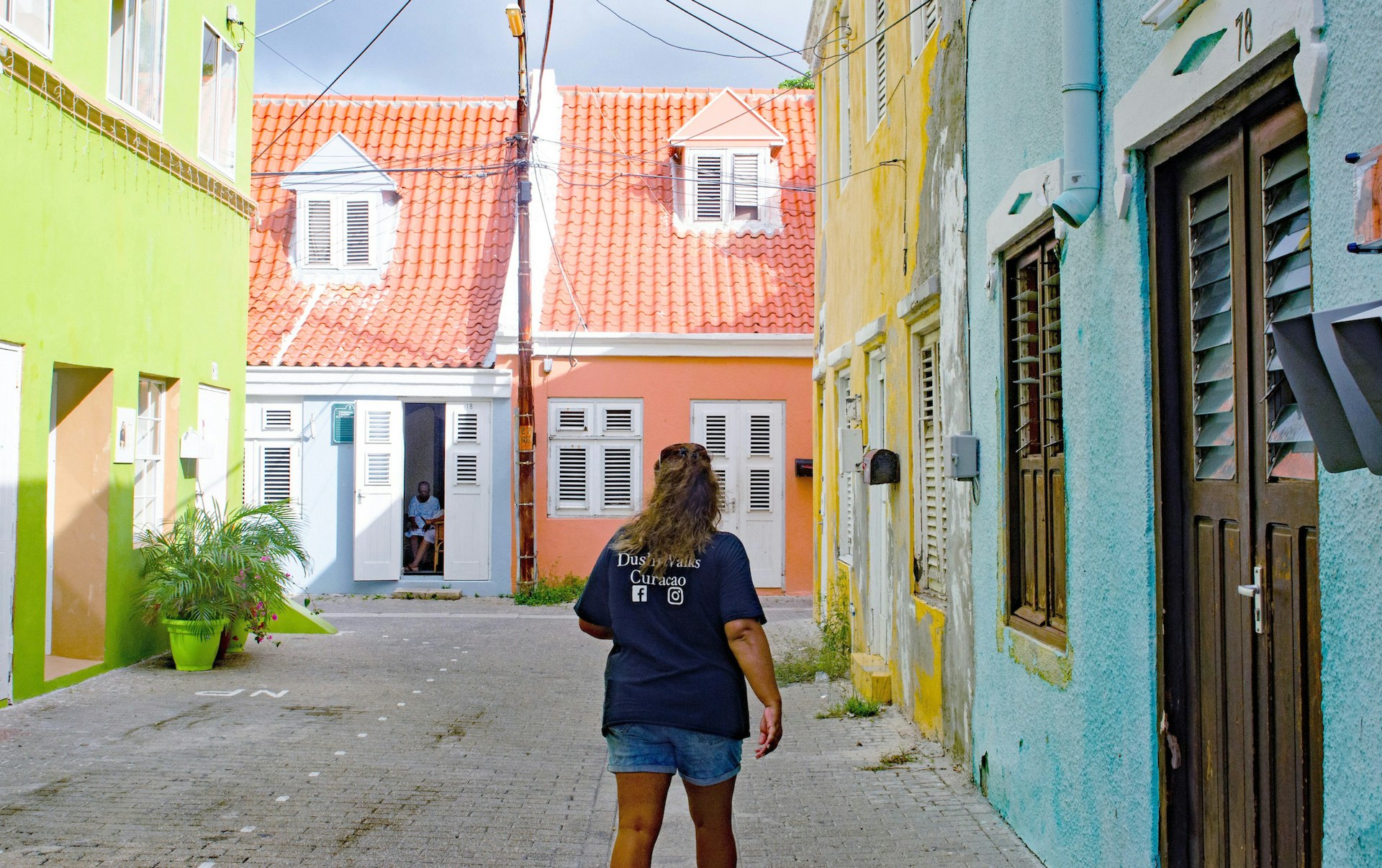
In Scharloo, you’ll explore the architecture of elaborate mansions built by Jewish merchants, and tour the new life-sized murals that are reviving the district. You’ll even stop in at a local’s home, and get a personal tour of his 19th century abode.
The icing on the cake: Dushi Walks Curaçao uses over 50% of tour fees to support the local communities visited, and you can see the donations posted on Facebook.
Shop local art on Middenstraat
Beyond architecture, Willemstad’s culture-filled spirit is also reflected in its art. Shopping for locally sourced handicrafts is part of the experience, and the options are becoming more plentiful. Around the bend from the well-known Serena’s Art Factory and Nena Sanchez gallery, is a narrow street – Middenstraat – home to newcomer SilvanyRoss.
The artist cooperative store stocks one-of-a-kind items made by local entrepreneurs, from a set of wooden coasters carved with local phrases, to hand-woven purses, and island-inspired paintings on slabs of wood.
Cool factor: Many of the artists whose goods fill the store have daytime jobs and moonlight as creatives to supplement their income. Where else could you get an oil painting by a Curaçaoan policeman?
Feel the Thursday Punda Vibes
Once a week, Punda is the place to be after dark for a multicultural evening of art, music and food. Set al fresco around the district’s main buildings and alleys, Thursday Punda Vibes kicks off at 6pm with folkloric dancers and marching bands performing on Gomezplein.
Browse the on site craft market stalls for handmade sculptures, paintings, or textile pieces, and check out surrounding stores and art galleries for discounts and special workshops.
If you’re more a doer, join the free Latin Vibes dance workshop on Gomezplein from 7pm-8pm, and try some kizomba moves. Continue the night with food and happy hour specials around Punda’s main restaurant hubs, including on Columbusstraat and Breedestraat, to the sound of live salsa or jazz. The packed evening ends with fireworks over St. Anna’s Bay around 9pm.

Tour the new West Scharloo
Crossing the Wilhelmina Bridge over the Waaigat Bay, opposite Punda’s floating market, leads to Scharloo. Willemstad’s youngest colonial district is best known for its colorful baroque residences, former 19th century homes of Jewish merchants that were restored into lavish government and private offices.
But that’s the eastern side of the district. The western end, called Scharloo Abou, wasn’t so lucky; for decades, drugs and prostitution took over the streets, in large part due to proximity to the wharf. Buildings fell in ruins, abandoned. As a result, few ventured to Scharloo from Punda.
Today, that’s all changing. Street Art Skalo, a project launched in 2016 by three local entrepreneurs with support from the Curaçao Monuments Foundation, is reviving the area with outdoor art, and turning West Scharloo into Willemstad’s hippest neighborhood.

Six colorful murals and installations already grace the neighborhood’s main streets, bringing life to a once desolate area. Local businesses have moved in and pedestrians are crossing over from Punda to see the magnificent works of art.
Stroll down Bitterstraat (a block behind the Curaçao Maritime Museum) to explore the series of murals from Curaçaoan talents such as Francis Sling and Garrick Marchena, representing scenes of nature or carrying thought-provoking messages. Also, be sure to check out the recycled art sculpture by Roberto Meeuw in the adjacent Parque Leyba made from plastic trash collected from the island’s north coast.
Across the street, Beyglz coffee shop serves crepes and sandwiches on a colonial patio, and a block away, newcomer Integra Natural’s organic bath and body products fill the air with fragrance.
Keep your eyes peeled: Street Art Skalo has carte blanche to transform 40 more walls and spaces in the neighborhood.
Sign up for the 2017 Caribbean Heritage Conference
In light of its upcoming UNESCO anniversary, Willemstad was selected this year to host the third annual Caribbean Conference on Heritage – formally called the Caribbean Conference of National Trusts and Preservation Societies. Organized by Stichting Monumentenzorg, the event will take place at the Renaissance Curaçao from November 16-19, 2017, on the heels of Simani di Kultura, a week-long annual cultural festival in Curaçao.
Activities are planned to get out and explore Willemstad’s three most significant colonial neighborhoods, on foot and by boat, with local and invited international heritage professionals from neighboring Caribbean islands, including Cuba. It’s the perfect opportunity to hop on English-speaking, expert-led tours of Punda, Otrobanda, and Scharloo. There’s also word of a cocktail reception at the Governor’s palace.
Year round, Monumentenzorg is based in East Scharloo, and offers valuable information on the city’s colonial history and architecture.
